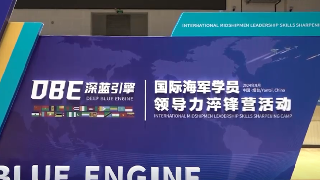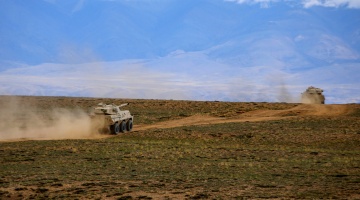By Liang Chunhui
The Japanese Ministry of Defense (JMOD) recently unveiled in "Defense of Japan 2024" the latest design details of the Aegis system equipped vessel (ASEV), a warship serving as the alternative to the now-defunct Aegis Ashore ballistic missile defense (BMD) system. JMOD claimed that it will become the world's most advanced Aegis system equipped warship upon completion.
Equipped with land-based Aegis system
In an effort to share the operational pressure of the eight existing Aegis-equipped destroyers of the Japan Maritime Self-Defense Force (JMSDF), Japan had initially planned to introduce two Aegis Ashore BMD systems. However, the plan was eventually canceled due to a variety of reasons.
Subsequently, JMOD introduced a plan to adapt the Aegis Ashore BMD system for ship-based use. In the 2023 defense budget, it was clarified that Japan would develop two ASEVs with a standard displacement of 20,000 tons based on the two previously planned Aegis Ashore BMD systems as alternatives to the now-defunct Aegis Ashore ballistic missile defense (BMD) system. The design plan for this type of vessel underwent several upgrades and refinements, ultimately resulting in a 12,000-ton version unveiled in "Defense of Japan 2024."
Focus on missile interception capabilities
According to information released by JMOD, the ASEV is designed to be 190 meters long and 25 meters wide, with a standard displacement of 12,000 tons, which is nearly 4,000 tons more than Japan's current Aegis destroyers of the Maya class. The ASEVs will feature128 Mk41 Vertical Launch System (VLS) cells, 32 cells more than those of the Mayaclass, capable of loading and launching anti-air and anti-missile weapons such as Standard-6 long-range ship-to-air missiles and Standard-3IIA enhanced midcourse anti-missile interceptor missiles.
In terms of detection systems, it will be outfitted with the AN/SPY-7 solid-state phased array radar. The detection capabilities of two such radar systems can cover the entire Japanese mainland. When integrated with the air defense missile system, it can effectively detect and intercept long-range, medium-range, and short-range ballistic missiles as well as cruise missiles, and even hypersonic weapons. The maximum interception range of the system is 1,500 kilometers and its maritime fleet air defense range is 370 kilometers.
In addition, it reserves ample expansion space to accommodate long-range attack or anti-satellite weapons.
Highlight long-range attack capabilities
In the future, the ASEVs will be equipped with improved Tomahawk cruise missiles and the upgraded Type 12 surface-to-ship missile (SSM) developed by Japan. With strong stealth capabilities, the upgraded Type 12 SSM can realize long-range precision strikes against both sea and land targets, which will enhance the ability of the JMSDF to perform long-range strikes on both sea and land as well as enable standoff strike capability.
According to the JMOD, the two ASEV vessels will primarily be responsible for ballistic missile surveillance and defense tasks after they are commissioned, thereby alleviating the operational pressure on Aegis destroyers of the JMSDF. However, judging from the information published in "Defense of Japan 2024" and the combat capabilities of this type of vessel, Japan is more likely to seek alternatives to the now-defunct Aegis Ashore ballistic missile defense (BMD) system. The ASEVs can remain on the front lines of Japan's home waters for extended periods to detect, track, and intercept ballistic missiles from potential adversaries. They can also form combat groups with light aircraft carriers, Aegis missile destroyers, and other destroyers and frigates. Additionally, they can engage in joint operations with other military forces in the Indo-Pacific region, playing a crucial role in assisting US forces in detecting and intercepting ballistic and hypersonic missiles.
Given the unique characteristics of the maritime battlefield around Japan, the large size and limited defensive capability of the ASEVs will generally prevent them from performing ballistic missile defense missions independently during wartime, so they will still need to operate in collaboration with other vessels. Therefore, it is not optimistic for Japan to achieve the improvement in both ballistic missile defense and fleet air defense capabilities as it had planned. The role of this type of vessel in the waters around Japan, where the strategic depth is relatively low, is still to be observed.









